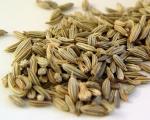دنیای زبان انگلیسی ( بهروزپور )
لغات و اصطلاح .داستان کوتاه . شعر.جوک .ضرب المثل.اشپزی.رمان. نمایشنامه.متن دوزبانهدنیای زبان انگلیسی ( بهروزپور )
لغات و اصطلاح .داستان کوتاه . شعر.جوک .ضرب المثل.اشپزی.رمان. نمایشنامه.متن دوزبانهRainbow
A rainbow is an optical and meteorological phenomenon that causes a spectrum of light to appear in the sky when the Sun shines on to droplets of moisture in the Earth's atmosphere. It takes the form of a multicoloured arc, with red on the outer part of the arc and violet on the inner section. A rainbow spans a continuous spectrum of colours; the distinct bands are an artifact of human colour vision. The most commonly cited and remembered sequence, in English, is Newton's sevenfold red, orange, yellow, green, blue, indigo and violet (popularly memorized by mnemonics like Roy G. Biv). Rainbows can be caused by other forms of water than rain, including mist, spray, and dew.
Rainbows can be observed whenever there are water drops in the air and sunlight shining from behind at a low altitude angle. The most spectacular rainbow displays happen when half the sky is still dark with raining clouds and the observer is at a spot with clear sky in the direction of the sun. The result is a luminous rainbow that contrasts with the darkened background.
The rainbow effect is also commonly seen near waterfalls or fountains. In addition, the effect can be artificially created by dispersing water droplets into the air during a sunny day. Rarely, a moonbow, lunar rainbow or nighttime rainbow, can be seen on strongly moonlit nights. As human visual perception for colour is poor in low light, moonbows are often perceived to be white.[1] It is difficult to photograph the complete semicircle of a rainbow in one frame, as this would require an angle of view of 84°. For a 35 mm camera, a lens with a focal length of 19 mm or less wide-angle lens would be required. Now that powerful software for stitching several images into a panorama is available, images of the entire arc and even secondary arcs can be created fairly easily from a series of overlapping frames. From an aeroplane, one has the opportunity to see the whole circle of the rainbow, with the plane's shadow in the centre. This phenomenon can be confused with the glory, but a glory is usually much smaller, covering only 5–20°.
At good visibility conditions (for example, a dark cloud behind the rainbow), the second arc can be seen, with inverse order of colours. At the background of the blue sky, the second arc is barely visible.
The seven colours of the rainbow
A rainbow spans a continuous spectrum of colours—there are no "bands." The apparent discreteness is an artefact of the photopigments in the human eye and of the neural processing of our photoreceptor outputs in the brain. Because the peak response of human colour receptors varies from person to person, different individuals will see slightly different colours, and persons with colour blindness will see a smaller set of colours. However the seven colours listed below are thought to be representative of how humans everywhere,[35] with normal colour vision, see the rainbow.
Newton originally (1672) named only five primary colours: red, yellow, green, blue and violet. Later he included orange and indigo, giving seven colours by analogy to the number of notes in a musical scale.[36]
Red: . Orange: . Yellow: . Green: . Blue: . Indigo: . Violet: .
خدا رو شکر که....
I am thankful for the alarm that goes off in the early morning house,
because it means that I am alive
خدا را شکر که هر روز صبح باید با زنگ ساعت بیدار شوم، این یعنی من هنوز زنده ام
I am thankful for being sick once in a while,
because it reminds me that I am healthy most of the time
خدا را شکر که گاهی اوقات بیمار میشوم، این یعنی بیاد آورم که اغلب اوقات سالم هستم
I am thankful for the husband who snoser all night,
because that means he is healthy and alive at home asleep with me
خدا را شکر که تمام شب صدای خرخر شوهرم را می شنوم
این یعنی او زنده و سالم در کنار من خوابیده است
I am thankful for my teenage daughter who is complaining about doing dishes,
because that means she is at home not on the street
خدا را شکر که دختر نوجوانم همیشه از شستن ظرفها شاکی است
این یعنی او در خانه است و در خیابانها پرسه نمی زند
I am thankful for the taxes that I pay, because it means that I am employed
خدا را شکر که مالیات می پردازم، این یعنی شغل و درآمدی دارم و بیکار نیستم
king lear
King Lear is a tragedy by William Shakespeare considered to be one of his greatest works, in which the title character descends into madness from the consequences of foolishly disposing of his estate between two of his three daughters based on their flattery. The play is based on the legend of Leir of Britain, a mythological pre-Roman Celtic king. It has been widely adapted for stage and screen, with the role of Lear played by many of the world's most accomplished actors.
The play is believed to have been written between 1603 and 1606 and later revised. The earlier version, The True Chronicle of the History of the Life and Death of King Lear and His Three Daughters, appeared in quarto in 1608. The Tragedy of King Lear, a more theatrical version, first appeared in the First Folio in 1623. Modern editors usually conflate the two versions, although some argue that each version has its individual integrity that should be preserved.[1]
After the Restoration, the play was often modified with a happy ending by theatre practitioners who disliked its dark and depressing tone, but since the 19th century it has been regarded as one of Shakespeare's supreme achievements. The tragedy is particularly noted for its probing observations on the nature of human suffering and kinship.
ادامه مطلب ...اموزش تصویری لغات (ادویه)
 Cinnamon |  Cloves |  Coriander Seed |
 Cream of Tartar |  Cumin Seed |  Curry Powder |
 Fennel Seed |  Fenugreek |  Garlic |
 Ginger |  Horseradish |  Mahleb |
 Mustard |  Nutmeg |  Onion |
Ode to the West Wind :Percy Bysshe Shelley
610. Ode to the West Wind |
O WILD West Wind, thou breath of Autumn's being | |
| Thou from whose unseen presence the leaves dead | |
| Are driven like ghosts from an enchanter fleeing, | |
| Yellow, and black, and pale, and hectic red, | |
| Pestilence-stricken multitudes! O thou | 5 |
| Who chariotest to their dark wintry bed | |
| The wingèd seeds, where they lie cold and low, | |
| Each like a corpse within its grave, until | |
| Thine azure sister of the Spring shall blow | |
| Her clarion o'er the dreaming earth, and fill | 10 |
| (Driving sweet buds like flocks to feed in air) | |
| With living hues and odours plain and hill; | |
| Wild Spirit, which art moving everywhere; | |
| Destroyer and preserver; hear, O hear! | |
Thou on whose stream, 'mid the steep sky's commotion, | 15 |
| Loose clouds like earth's decaying leaves are shed, | |
| Shook from the tangled boughs of heaven and ocean, | |
| Angels of rain and lightning! there are spread | |
| On the blue surface of thine airy surge, | |
| Like the bright hair uplifted from the head | 20 |
| Of some fierce Mænad, even from the dim verge | |
| Of the horizon to the zenith's height, | |
| The locks of the approaching storm. Thou dirge | |
| Of the dying year, to which this closing night | |
| Will be the dome of a vast sepulchre, | 25 |
| Vaulted with all thy congregated might | |
| Of vapours, from whose solid atmosphere | |
| Black rain, and fire, and hail, will burst: O hear! |
ایا می دانستید؟
آیا میدانستید آنهایی که از نظر احساسی بسیار قوی به نظر میرسند در واقع بسیار ضعیف و شکننده هستند
Did you know that those who spend their time protecting others are the ones that really need someone to protect them?
آیا میدانستید که آنهایی که زندگیشان را وقف مراقبت از دیگران میکنند خود به کسی برای مراقبت نیاز دارند
Did you know that the three most difficult things to say are:
I love you, Sorry and help me
آیا میدانستید که سه جمله ای که بیان آنها از همه جملات سخت تر است
( دوستت دارم ، متاسفم ، به من کمک کن ) میباشد
Did you know that those who dress in red are more confident in themselves?
آیا میدانستید که کسانی که قرمز میپوشند از اعتماد بیشتری نسبت به خود بر خوردارند
Did you know that those who dress in yellow are those that enjoy their beauty?
آیا میدانستیدکه کسانی که زرد میپوشند از زیبایی خود لذت میبرند
اموزش تصویری اصطلاحات
صطلاح شماره 28
Cross your finger

منبع:سایت راسخون
Jane Austen /جین آستن
Jane Austen (16 December 1775 – 18 July 1817) was an English novelist whose works of romantic fiction, set among the gentry, earned her a place as one of the most widely read writers in English literature, her realism and biting social commentary cementing her historical importance among scholars and critics.[1]
Austen lived her entire life as part of a close-knit family located on the lower fringes of the English gentry.[2] She was educated primarily by her father and older brothers as well as through her own reading. The steadfast support of her family was critical to her development as a professional writer.[3] Her artistic apprenticeship lasted from her teenage years until she was about 35 years old. During this period, she experimented with various literary forms, including the epistolary novel which she tried then abandoned, and wrote and extensively revised three major novels and began a fourth.[B] From 1811 until 1816, with the release of Sense and Sensibility (1811), Pride and Prejudice (1813), Mansfield Park (1814) and Emma (1816), she achieved success as a published writer. She wrote two additional novels, Northanger Abbey and Persuasion, both published posthumously in 1818, and began a third, which was eventually titled Sanditon, but died before completing it.
Austen's works critique the novels of sensibility of the second half of the 18th century and are part of the transition to 19th-century realism.[4][C] Her plots, though fundamentally comic,[5] highlight the dependence of women on marriage to secure social standing and economic security.[6] Her work brought her little personal fame and only a few positive reviews during her lifetime, but the publication in 1869 of her nephew's A Memoir of Jane Austen introduced her to a wider public, and by the 1940s she had become widely accepted in academia as a great English writer. The second half of the 20th century saw a proliferation of Austen scholarship and the emergence of a Janeite fan culture.
Novels
- Sense and Sensibility (1811)
- Pride and Prejudice (1813)
- Mansfield Park (1814)
- Emma (1815)
- Northanger Abbey (1818) (posthumous)
- Persuasion (1818) (posthumous)
Short fiction
- Lady Susan (1794, 1805)
Unfinished fiction
- The Watsons (1804)
- Sanditon (1817)
Other works
- Sir Charles Grandison (1793, 1800)[121]
- Plan of a Novel (1815)
- Poems
- Prayers
- Letters